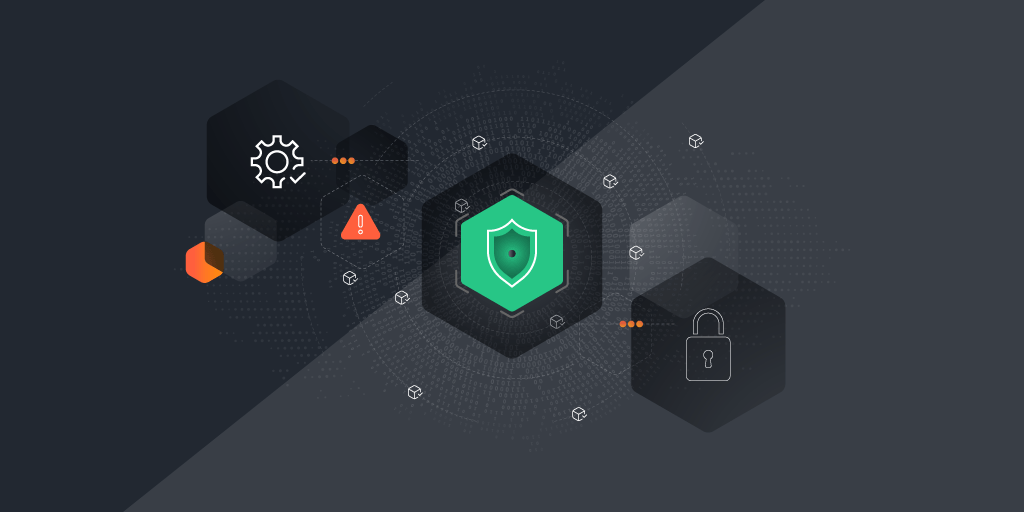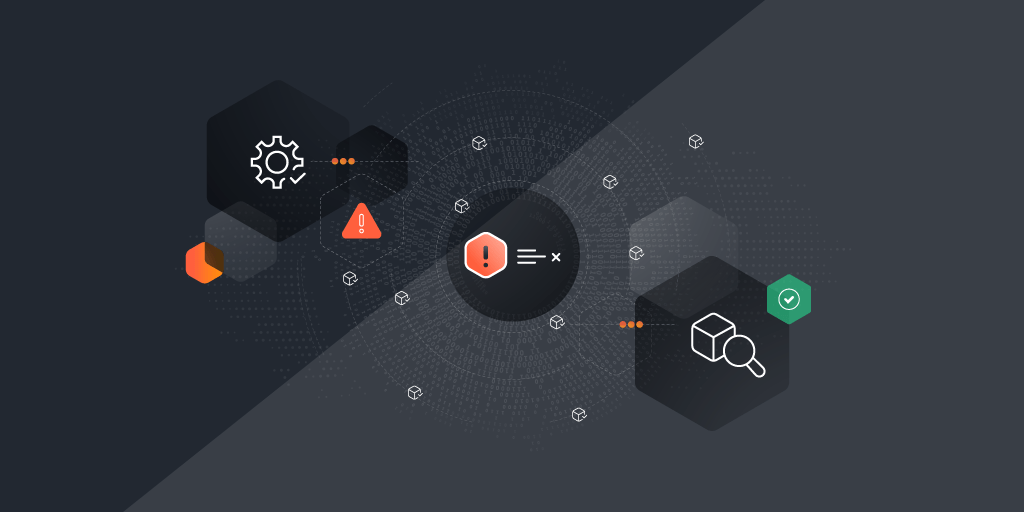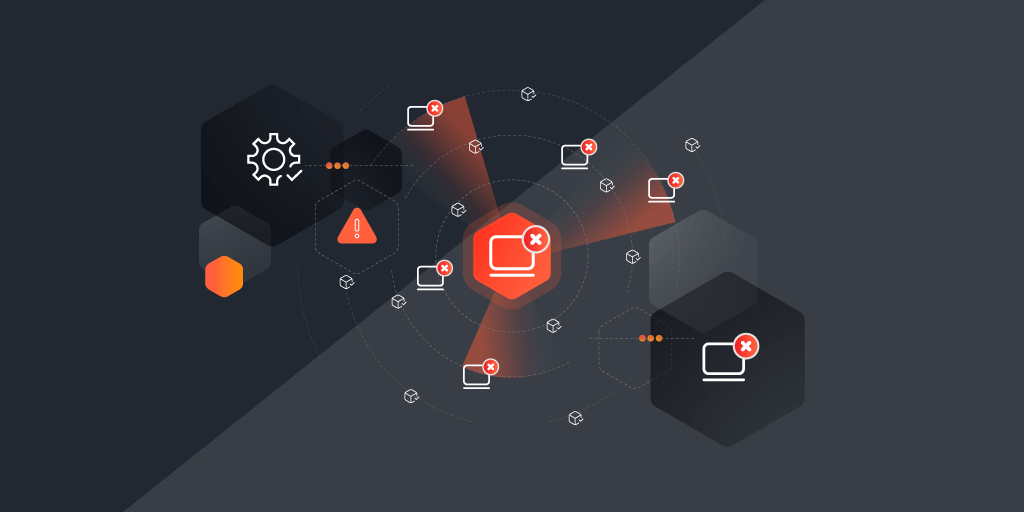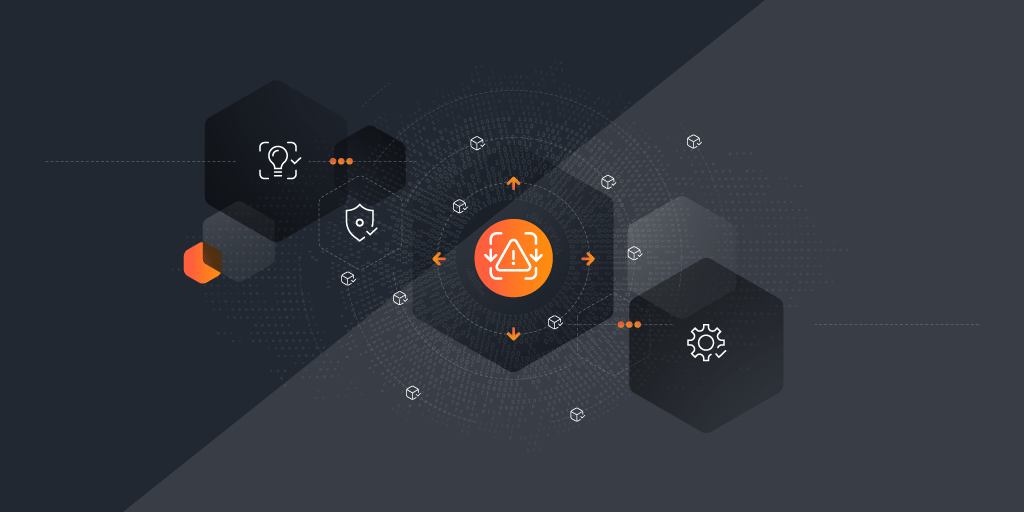
To effectively protect your IT infrastructure, implementing a comprehensive set of security measures is crucial. Building a robust defense necessitates a multi-layered approach, akin to a pyramid. At the core of this strategy lies IT Asset Management (ITAM), a fundamental practice that supports every other layer of cybersecurity.
By understanding how to leverage IT asset management effectively, enterprises and organizations can enhance their cybersecurity posture and improve overall information security and risk management. Here’s how a solid IT asset management foundation supports each layer of cybersecurity, ensuring a comprehensive defense.
IT Asset Management’s Role in Risk Management
A strong cybersecurity posture is built on effective risk management. IT Asset Management (ITAM) plays a pivotal role in this foundational area. By providing system administrators with complete visibility over their IT environment, ITAM allows for a detailed inventory of every asset in the network. This comprehensive view enables administrators to assess potential risks with greater accuracy, ensuring that all assets are accounted for and managed appropriately.
With this level of insight, administrators can more effectively identify vulnerabilities and take proactive steps to mitigate them. By understanding the full scope of their IT assets, they can make informed decisions about where to allocate resources and which areas require immediate attention, thereby enhancing overall risk management efforts.
This foundational knowledge provided by ITAM is crucial for maintaining a robust cybersecurity posture. It supports informed decision-making and helps organizations address potential vulnerabilities before they can be exploited, thereby strengthening their overall security strategy.
Reducing Shadow IT
Shadow IT, which refers to unauthorized software, devices, or services within an organization, can introduce significant security risks. These assets often remain unmanaged and unmonitored, creating potential vulnerabilities that can compromise the security of sensitive data. The lack of visibility and control over these rogue elements makes it challenging to safeguard the IT environment effectively.
IT Asset Management (ITAM) plays a crucial role in addressing these issues by ensuring that all assets are properly accounted for and managed according to company policies. With a comprehensive inventory of IT assets, administrators can identify and mitigate the risks associated with shadow IT. By tracking and controlling unauthorized devices and services, ITAM helps prevent these potential security threats from accessing critical data and systems.
By reducing the prevalence of shadow IT through effective asset management, organizations can establish a more secure and controlled IT environment. This proactive approach not only enhances overall security but also supports a more structured and reliable IT infrastructure.
Forecasting Future Needs
Proactive asset management is essential not only for addressing current security concerns but also for preparing organizations for future demands. By leveraging IT Asset Management (ITAM), organizations can analyze usage patterns to predict future asset needs. This foresight enables them to anticipate when equipment will require replacement or upgrades, facilitating more effective budget planning and reducing the likelihood of security gaps.
With a clear understanding of future requirements, organizations can allocate resources efficiently and plan their budgets to accommodate upcoming changes. This proactive approach ensures that the IT environment remains secure and resilient as it evolves, helping to prevent potential vulnerabilities that could arise from outdated or insufficient equipment.
By incorporating forecasting into IT asset management, organizations can stay ahead of technological advancements and maintain a robust, secure IT infrastructure. This strategic planning not only supports current operations but also fortifies the organization’s readiness for future challenges.
IT Asset Management: The Cornerstone of Cybersecurity
IT Asset Management is the bedrock of any effective cybersecurity strategy. Maintaining an up-to-date inventory of all hardware and software assets is essential for several reasons:
Identification and Risk Assessment
Knowing what assets are in use allows for accurate identification of potential vulnerabilities and threats, which supports cybersecurity asset management. Real-time insight into your IT estate provides the data you need to make informed decisions when managing security operations.
Compliance and Auditing
ITAM facilitates compliance with regulatory requirements and provides a clear audit trail, essential for information security and risk management. Without a robust IT asset management system, other security measures may falter, making ITAM the first step in achieving a resilient cybersecurity posture.
Patch Management: Enhancing Security Through Regular Updates
Building upon the IT asset management foundation is Patch Management. Regular updates and patches address known vulnerabilities. A complete asset inventory allows organizations to prioritize patches based on the criticality of the assets, ensuring that the most vulnerable systems are updated first.
Addressing vulnerabilities identified through ITAM enhances IT asset protection and reduces the risk of exploitation. Patch management is a natural extension of IT asset management, ensuring systems remain secure and compliant.
Endpoint Protection: Safeguarding Individual Devices
Endpoint Protection Solutions protect individual devices from malware and other threats.An accurate inventory helps deploy endpoint protection measures effectively across all devices. ITAM provides the context needed for effective monitoring and response, enhancing overall cybersecurity asset management.
Endpoint protection relies on the visibility and accuracy provided by IT asset management to safeguard each device against specific threats.
Multi-Factor Authentication (MFA): Strengthening Access Control
Multi-Factor Authentication (MFA) adds an extra layer of security by requiring multiple forms of verification. Knowing all assets and user accounts helps in implementing MFA across all relevant systems, ensuring robust access control. ITAM supports MFA by identifying critical assets that require stronger authentication measures, improving security operations.
MFA complements foundational IT asset management practices by enhancing access control and reducing the likelihood of unauthorized access.
Firewalls and Intrusion Detection Systems (IDS): Defending the Network Perimeter
Firewalls and Intrusion Detection Systems (IDS) provide crucial defense against external threats. An accurate asset inventory allows for proper configuration of firewalls to block malicious traffic effectively. ITAM also provides context for IDS systems to detect and respond to suspicious activities promptly.
These perimeter defenses are more effective when supported by a strong IT asset management foundation, ensuring that all network traffic is properly monitored and controlled.
Security Training and Awareness Programs: Educating Users
At the top of the pyramid are Security Training and Awareness Programs. Effective training prevents human error and is enhanced by IT asset management. Training programs can be tailored based on the types of assets in use, ensuring relevant and practical security practices. ITAM also helps create a security-conscious culture by providing a clear view of the organization’s assets and their associated risks.
Security training relies on insights provided by IT asset management to educate employees effectively and reinforce a culture of security.
Start Laying Your ITAM Foundation
Like a solid foundation, ITAM supports every layer of cybersecurity—from patch management and endpoint protection to MFA and network defenses. While incorporating robust IT asset management is vital for a strong cybersecurity posture, it’s essential to start with comprehensive asset discovery to maximize its effectiveness. Asset discovery ensures that you have an accurate and up-to-date inventory of all your IT assets, which is the foundation upon which effective ITAM and security measures are built.
Lansweeper’s asset discovery and IT asset management, strengthens each individual security layer, so you can build a resilient, multi-layered defense against evolving cyber threats. Ready to elevate your IT asset management strategy? Request a free demo today and see how our asset discovery can provide the comprehensive visibility and control you need to protect your organization.


